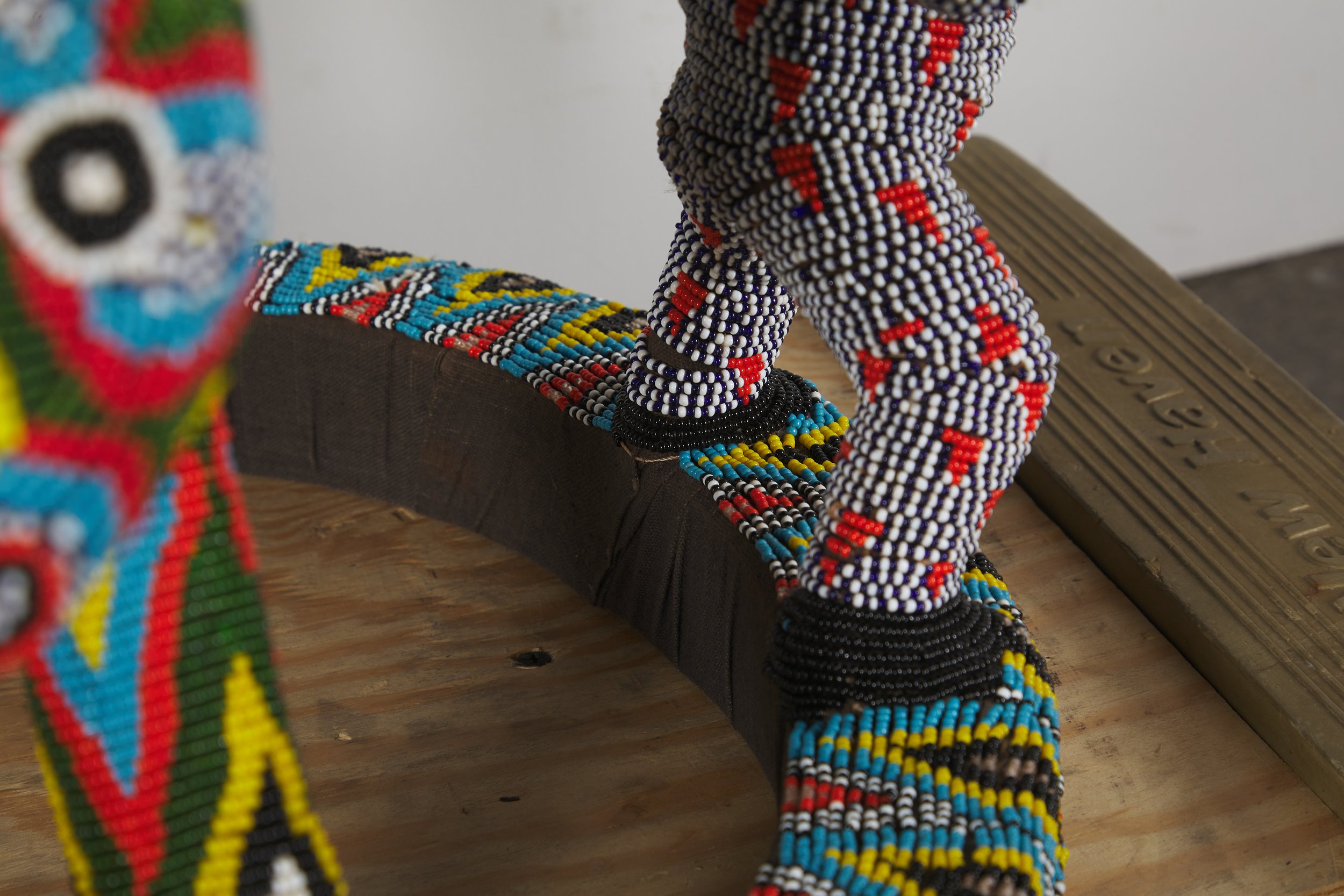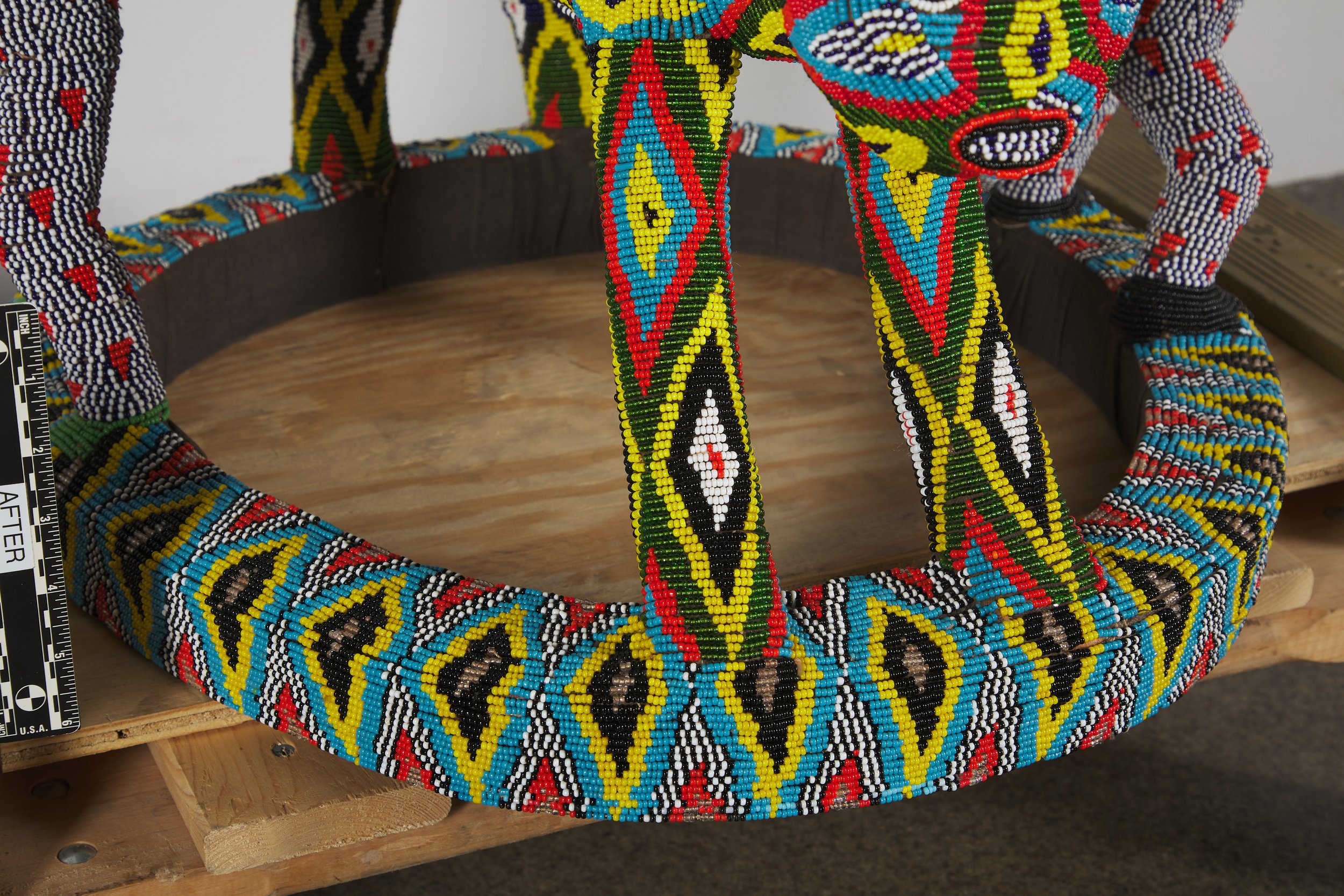Carved wood, fabric wrapped and covered in thousands of meticulously placed seed beads, this chair's owner had one goal when she contacted The Center: "I wanted to make sure it was in its best condition!!" The owner, Lori, inherited the chair from her mother. It was in her mother's gallery in Palm Beach for many years and later was in her home. Before this, the chair's history is unknown; however, the construction and design are consistent with 20th-century Bamileke beaded art.
20th-century Bamileke beaded throne, before treatment
As John Pemberton III notes in his book from 2008, African Beaded Art: Power and Adornment, "beadwork is an essential element of Bamileke Art and distinguishes them from other regions of Africa. It is an art form that is highly personal in that no two pieces are alike and are often used in dazzling colors that catch the eye. They may be an indication of status based on what kinds of beads are used. Beadwork utilized all over on wooden sculptures is a technique that is unique only to the Cameroon grasslands."
20th-century Bamileke beaded throne, before treatment
Examination showed a light dust layer on the upper portion of the throne and a heavy dust layer on the lower part of the throne. A 12" section of bare thread was hanging from the proper left shoulder of the leopard figure. There was an 18" section of damaged beadwork at the bottom edge of the front right. That damage had affected three strands of the beadwork; two had become loose and were hanging freely, but still connected at the ends, while the third had broken free with approximately 6" of missing beadwork. Fortunately, the owner had been able to save some of the beads, but it was not enough to complete the missing section.
Detail, before treatment
Detail, before treatment
Detail, before treatment
Josh McCauley, Senior Conservator of Objects and Frames, first cleaned the surface to remove dust, dirt, and grime. The two loose strands of beadwork at the bottom edge of the rail were re-secured in place using monofilament. Next, the areas of missing beadwork were recreated using both original beads that the owner was able to save and with newly sourced beads. While this is a straightforward treatment, it is a time-consuming and slow treatment in action. Work sourcing new beads that would integrate with the original beads and appropriately replicating the patterns was required before the conservation could begin. Then, the slow work of cleaning, stringing and re-securing the beads. Here, you can watch the treatment with Josh McCauley, Senior Conservator of Objects and Frames.
20th-century Bamileke beaded throne, after treatment
20th-century Bamileke beaded throne, after treatment.
Detail images after treatment, below
Source: https://en.m.wikipedia.org/wiki/Bamileke_people









